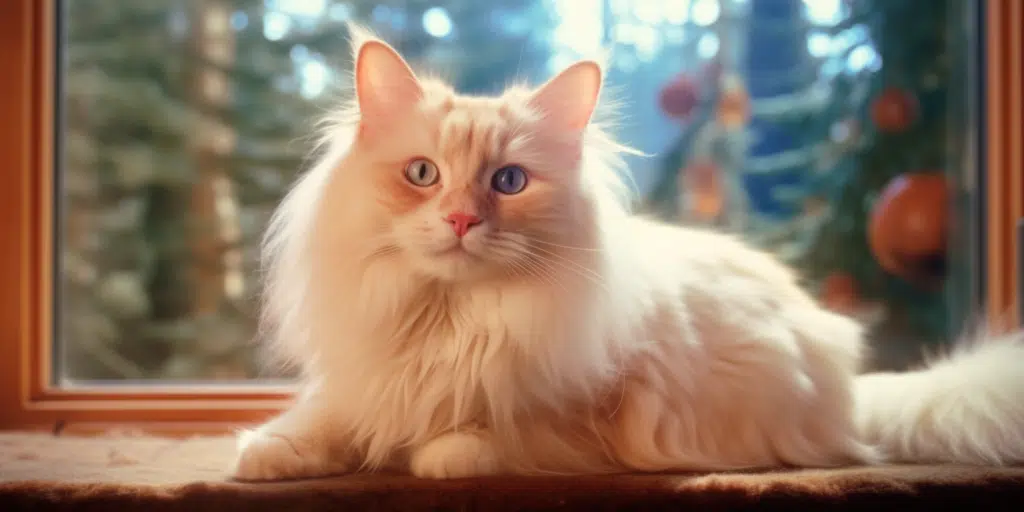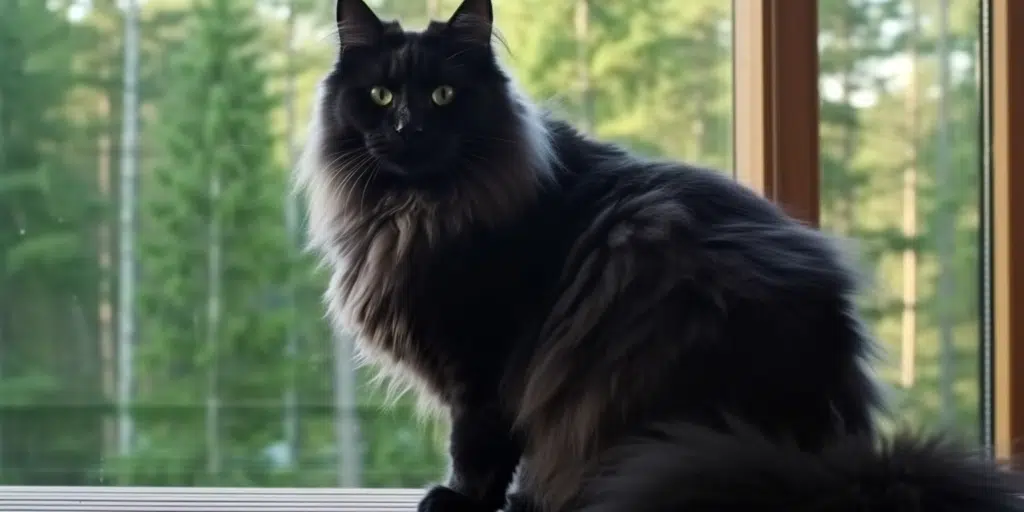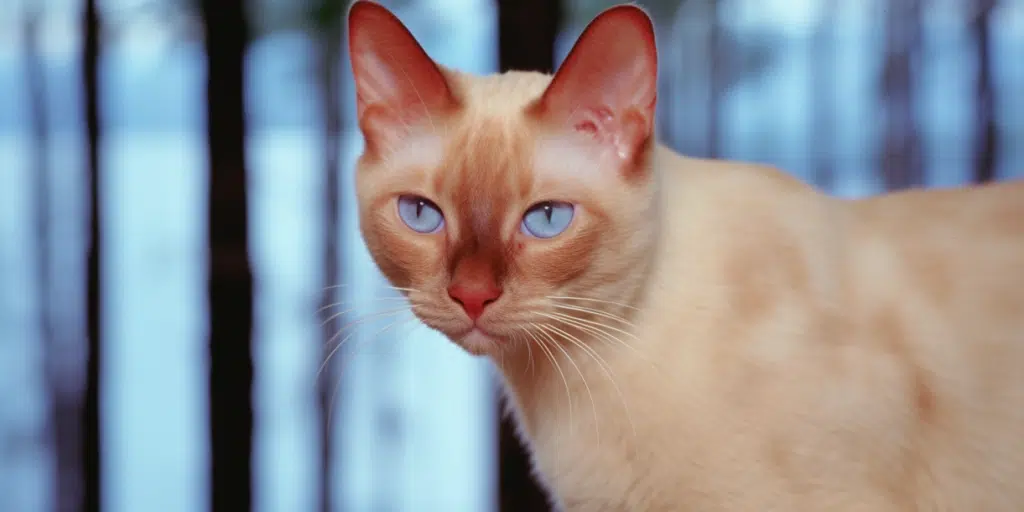When it comes to the animal kingdom, there is an undeniable charm in the poise of felines that often captures the hearts of pet lovers. Among such admired breeds are the Himalayan cats, a delightful mix of Siamese and Persian breeds, known for their striking blue eyes and long, luxurious fur. But how does this breed fare against other esteemed members of the cat family, the Ragdoll and the Persian? That’s exactly what we aim to explore in this blog post. Cat enthusiasts, buckle up as we embark on a journey of comparison, engrossed in the details that differentiate these feline aristocrats.
In the world of cats, the Himalayan stands out with a personality and appearance as unique as its mountainous namesake. These cats are adored for their affectionate nature, serene disposition, and of course, their distinctive looks.
In this article, we aim to present you with an in-depth comparison of Himalayan cat vs other breeds. Whether you’re a seasoned cat owner deciding on a new addition to your family or merely a cat-curious individual, the peculiarities of these breeds await your discovery.
Himalayan Cat Vs Ragdoll

The Himalayan cat, also known as the “Himmie,” is a breed well-respected for its affectionate nature and beautiful, long coat that demands attention through high shedding levels. On the other hand, we have the Ragdoll, known for its docile and placid disposition, captivating the hearts of feline aficionados with its silky, semi-long coat which surprisingly doesn’t shed as much. Both breeds are known for their high levels of affection, making them excellent companions.
When comparing these two breeds, one significant difference lies in their energy levels. The Himalayan cat tends to have a low to medium energy level – they enjoy a good play session but also cherish their time lounging around the house, preferably on a warm lap.
Ragdolls, in contrast, while still enjoying a good cuddle, will have a more pronounced playfulness, with a medium to high energy level that can make them more active and entertaining playmates. However, their laid-back nature can sometimes overshadow their playful side.
Notably, Ragdolls have a defining feature: they tend to go limp when picked up, hence their name. This characteristic is less pronounced in Himalayans, who may enjoy being held but prefer to keep control over their limbs. This difference can be particularly charming for those who love the ‘floppy’ behavior specific to Ragdolls.
Training, while possible with both breeds, tends to be more straightforward with Ragdolls, which have a slightly higher propensity for learning tricks and commands, although neither breed is known particularly for its trainability.
Let’s break down these differences in a summary table for quicker reference.
| Characteristics | Himalayan Cat (Male) | Ragdoll (Male) |
|---|---|---|
| Average height | 10-12 inches | 8-10 inches |
| Average weight | 7-12 lb | 10-15 lb |
| Lifespan | 9-15 years | 12-16 years |
| Exercise | Low-Medium | Medium-High |
| Shedding Level | High | Low |
| Affection Level | High | High |
| Energy Level | Low-Medium | Medium-High |
| Trainability | Moderate | Higher than Himalayan |
Himalayan Cat Vs Persian
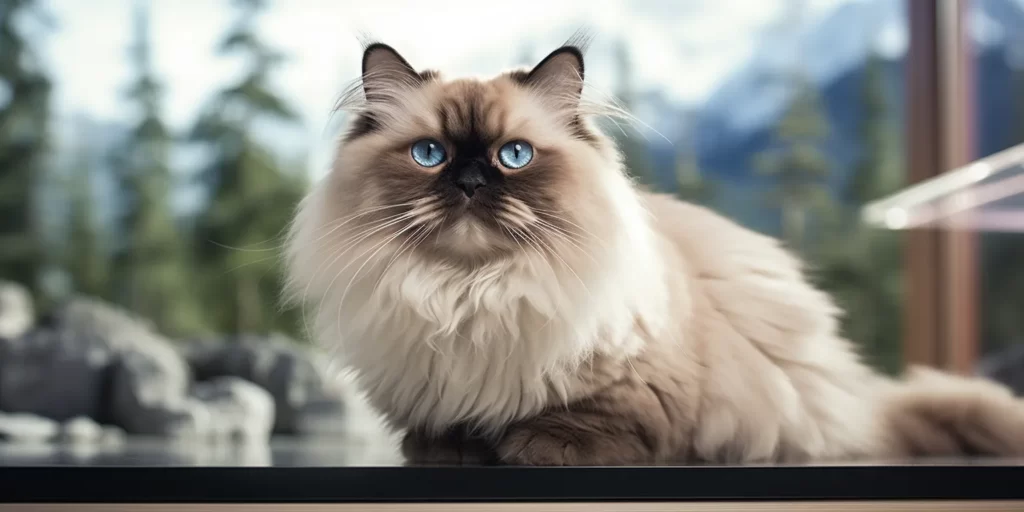
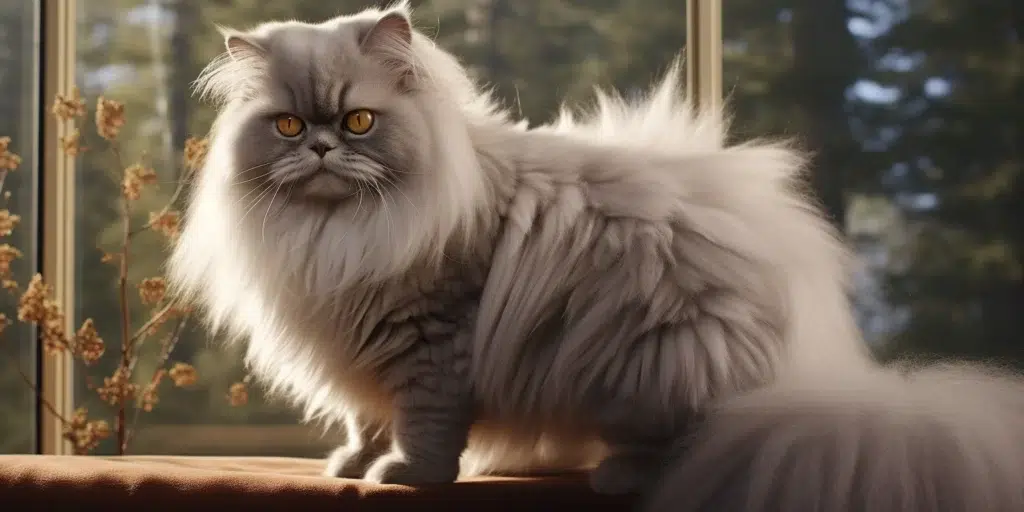
Shifting our comparison to the Himalayan and Persian, one might find it a bit more nuanced, as Himalayans are essentially a sub-breed of the Persian, with the main distinction being their blue eyes and pointed coloring. Essentially, if you adore the Persian but fancy a more colorful twist, the Himalayan might catch your fancy. Both breeds share luxuriously long fur, requiring significant grooming to prevent mats and tangles.
Persian cats are well-loved for their sweet, gentle nature, and calm demeanor, comparable to that of the Himalayan. Weight differences between the breeds are minimal, with Persians sometimes being a tad lighter. They also share a similar height range, enveloping them in a cuddly, compact package of fur. In terms of lifespan, Persian cats can live a little longer on average, possibly due to their established lineage.
Both Himalayans and Persians have high affection levels, often described as loving and devoted to their humans. However, Persians may be slightly less active and even more laid-back than the Himalayans. Shedding is high for both breeds, which is something to consider if you’re not a fan of finding fur on every surface. Here’s a quick snapshot of how these two breeds compare on various fronts.
| Characteristics | Himalayan Cat (Male) | Persian (Male) |
|---|---|---|
| Average height | 10-12 inches | 10-15 inches |
| Average weight | 7-12 lb | 7-15 lb |
| Lifespan | 9-15 years | 12-17 years |
| Exercise | Low-Medium | Low |
| Shedding Level | High | High |
| Affection Level | High | High |
| Energy Level | Low-Medium | Low |
| Trainability | Moderate | Low |
Himalayan Cat Vs Maine Coon
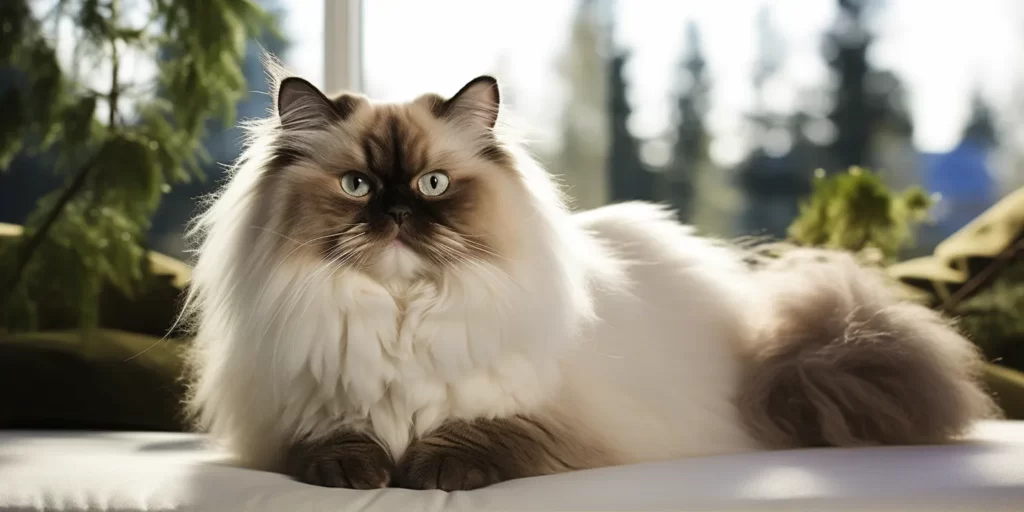
The Maine Coon is often known as the ‘gentle giant’ of the cat world, and a comparison with the Himalayan cat unveils some fascinating distinctions. Maine Coons are one of the largest domesticated cat breeds and boast a weight that can easily eclipse that of the Himalayan. Their height and length are also greater, making for a physically imposing yet gentle pet.
In terms of temperament, the Maine Coon is known for its high energy levels and playful nature. They are often described as ‘dog-like’ in their keenness to play fetch and engage with their owners. This contrasts with the more sedate Himalayan, which may be content with less intense play sessions and more cuddling time.
The Maine Coon’s thick, water-repellent coat is surprisingly low-shedding compared to the lush, long fur of the Himalayan. Despite their size and mane, they do not necessarily require more grooming than Himalayans, but their size might make the task more formidable. Maine Coons are also tend to be distinctly affectionate and sociable, making them excellent family pets just like the Himalayans.
Here’s how they size up to each other in a table:
| Characteristics | Himalayan Cat (Male) | Maine Coon (Male) |
|---|---|---|
| Average height | 10-12 inches | 10-16 inches |
| Average weight | 7-12 lb | 18-22 lb |
| Lifespan | 9-15 years | 12.5-15 years |
| Exercise | Low-Medium | High |
| Shedding Level | High | Low |
| Affection Level | High | High |
| Energy Level | Low-Medium | High |
| Trainability | Moderate | Medium-High |
Himalayan Cat Vs Siberian Cat

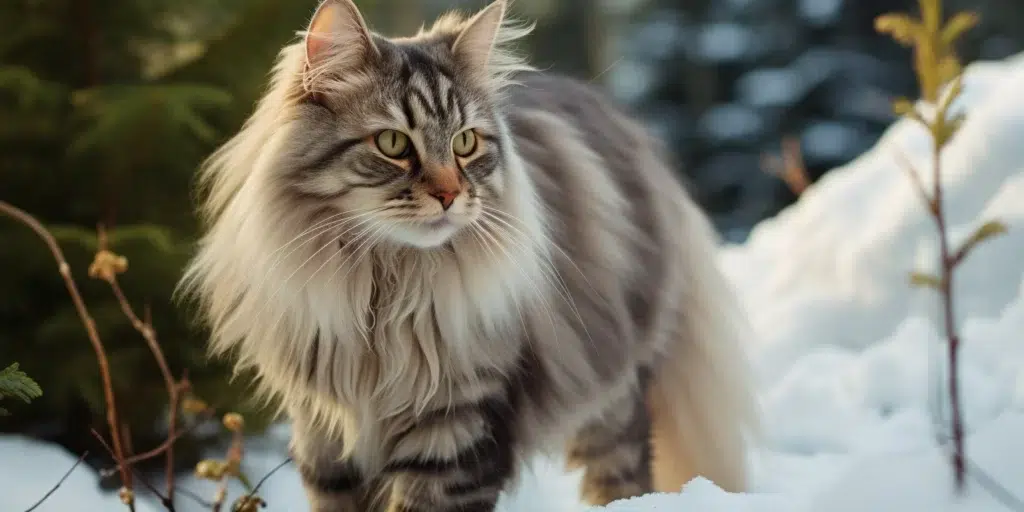
The Siberian cat, hailing from the forested areas of Russia, exhibits a robust and muscular build similar to the Maine Coon but is known for being quite agile despite its size. The Siberian’s weight range has some overlap with the Himalayan, but typically, Siberians can be larger.
The lush fur of the Siberian cat has evolved to protect against harsh climates, leading to a coat that is dense but only sheds moderately. This makes the grooming requirements somewhat different from the high-maintenance coat of the Himalayan. Energy levels in Siberian cats are moderate: more active than Himalayans but not as intense as the Maine Coons, making them versatile playmates who can also appreciate relaxation.
With a high affection level, Siberian cats are loving and often enjoy being close to their human companions. When considering adopting a Siberian or a Himalayan, potential pet owners should consider their readiness for regular interactive play alongside moderate grooming responsibilities.
Here’s how they stack up in tabular form:
| Characteristics | Himalayan Cat (Male) | Siberian Cat (Male) |
|---|---|---|
| Average height | 10-12 inches | 9-11 inches |
| Average weight | 7-12 lb | 10-18 lb |
| Lifespan | 9-15 years | 10-18 years |
| Exercise | Low-Medium | Medium |
| Shedding Level | High | Low-Medium |
| Affection Level | High | High |
| Energy Level | Low-Medium | Medium |
| Trainability | Moderate | Medium |
Himalayan Cat Vs Scottish Fold

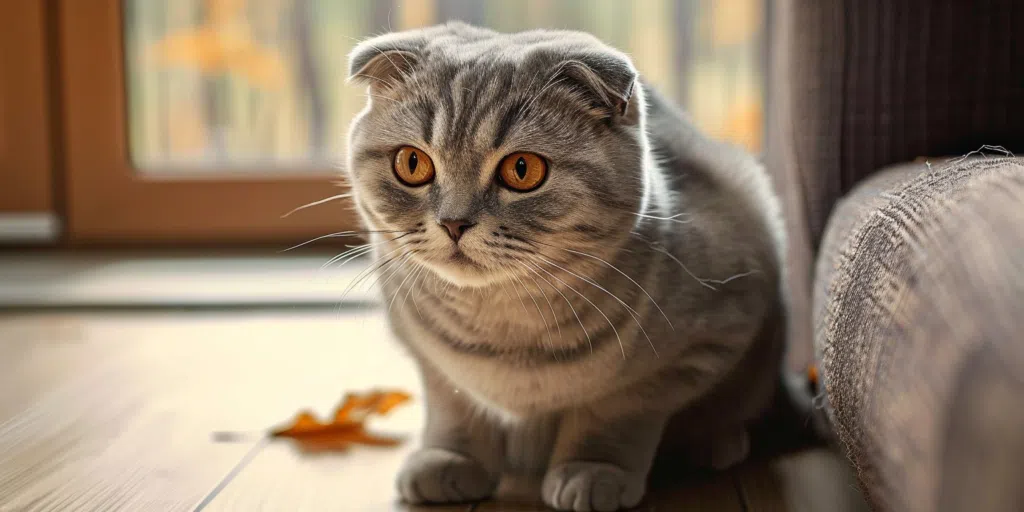
The charming Scottish Fold is most readily identified by its unique ear structure, which folds forward and downward, giving the cat an owl-like appearance. In terms of size, Scottish Folds are smaller than Himalayan males, with a more moderate shedding level due to their variable coat length which can range from short to medium long.
With similar lifespans, Scottish Folds and Himalayans both make long-term commitments for a pet owner. Scottish Folds have a low to medium energy level, which aligns well with the Himalayan’s temperament, making either breed a great option for a pet owner who prefers a more tranquil home environment.
Both breeds are highly affectionate, though the Scottish Fold’s unique look and tendency to sit in unusual positions, known as the “Buddha sit,” can add an extra touch of endearment to their companionship.
Considering a Scottish Fold or a Himalayan ultimately comes down to a personal preference for the quirks and physical characteristics that distinguish each breed.
Here’s a comparative table to visualize their differences:
| Characteristics | Himalayan Cat (Male) | Scottish Fold (Male) |
|---|---|---|
| Average height | 10-12 inches | 8-10 inches |
| Average weight | 7-12 lb | 8.8-13.2 lb |
| Lifespan | 9-15 years | 14-16 years |
| Exercise | Low-Medium | Low-Medium |
| Shedding Level | High | Medium-High |
| Affection Level | High | High |
| Energy Level | Low-Medium | Low-Medium |
| Trainability | Moderate | Moderate |
Whether drawn to the luxurious fur of the Himalayan, the robust stature of the Maine Coon, the agility of the Siberian, or the peculiar charm of the Scottish Fold, cat lovers have an array of wonderful breeds to choose as their companions, each with its own unique set of qualities and endearing attributes.
Himalayan Cat Vs Siamese

When comparing the serene Himalayan cat with the graceful Siamese, there are certain contrasts that become evident. The Siamese is renowned for its chiseled features and strikingly short, sleek coat. This breed’s personality is quite different from the Himalayan, often being more vocal and demanding of attention. A Siamese cat’s energy level is typically medium to high, mirroring its curious and athletic nature, which craves mental stimulation and physical activity.
In terms of physicality, all the Siamese types generally has a slender and more muscular build compared to the Himalayan’s stockier frame. This physical difference also translates into varying energy levels, with the Siamese being more agile and active, often found perching on the highest points of the home.
In contrast, the Himalayan’s lower energy level corresponds to its preference for peaceful environments and generous laps as opposed to high perches.
Shedding in Siamese cats is considerably less due to their shorter coats, which is something that potential cat owners might consider in terms of grooming and household maintenance. Both breeds, however, score high on the affection scale, with Siamese cats known for their loyalty and Himalayans for their gentle and loving temperament.
Let’s compare them in detail with a concise table:
| Characteristics | Himalayan Cat (Male) | Siamese (Male) |
|---|---|---|
| Average height | 10-12 inches | 8-11 inches |
| Average weight | 7-12 lb | 10-15 lb |
| Lifespan | 9-15 years | ≈ 15 years |
| Exercise | Low-Medium | High |
| Shedding Level | High | Low-Medium |
| Affection Level | High | High |
| Energy Level | Low-Medium | Medium-High |
| Trainability | Moderate | High |
Himalayan Cat Vs Birman

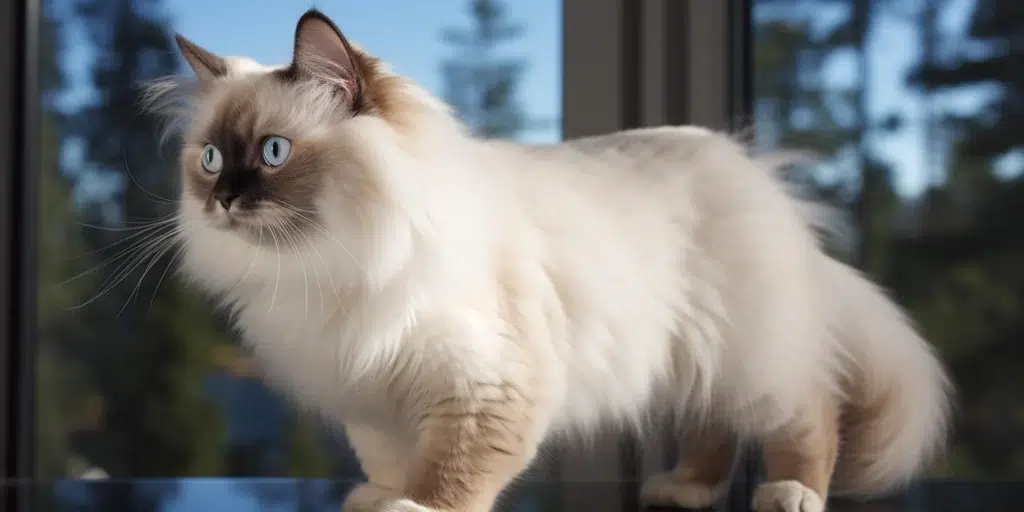
The affectionate Himalayan and the fabulous Birman share a lot of similarities, both bearing a rich, long coat and a placid temperament. However, there are distinct variations to consider when contemplating these two breeds. The Birman, with striking blue eyes similar to the Himalayan, typically has a medium energy level: less laid-back than Himalayans but also not overly rambunctious.
Birman cats are characterized by their almost mystical appearance, complete with a silky coat and contrasting color points, though their shedding level remains low to medium – somewhat less than that of the Himalayan. This breed does not require quite as much grooming and tends to keep a cleaner coat. Birmans are also known for their friendly nature, adaptable to many living environments and comfortable with families and other pets.
Affection levels are high in both the Birman and the Himalayan, making them excellent pet choices for those who value emotional connection and expressive pets. With Birmans, you might find them following you from room to room, seeking interaction and involvement in your daily activities.
Here is a comparison table for a quick overview:
| Characteristics | Himalayan Cat (Male) | Birman (Male) |
|---|---|---|
| Average height | 10-12 inches | 8-10 inches |
| Average weight | 7-12 lb | 7-12 lb |
| Lifespan | 9-15 years | 9-15 years |
| Exercise | Low-Medium | Medium |
| Shedding Level | High | Low-Medium |
| Affection Level | High | High |
| Energy Level | Low-Medium | Medium |
| Trainability | Moderate | Medium-High |
Himalayan Cat Vs Balinese

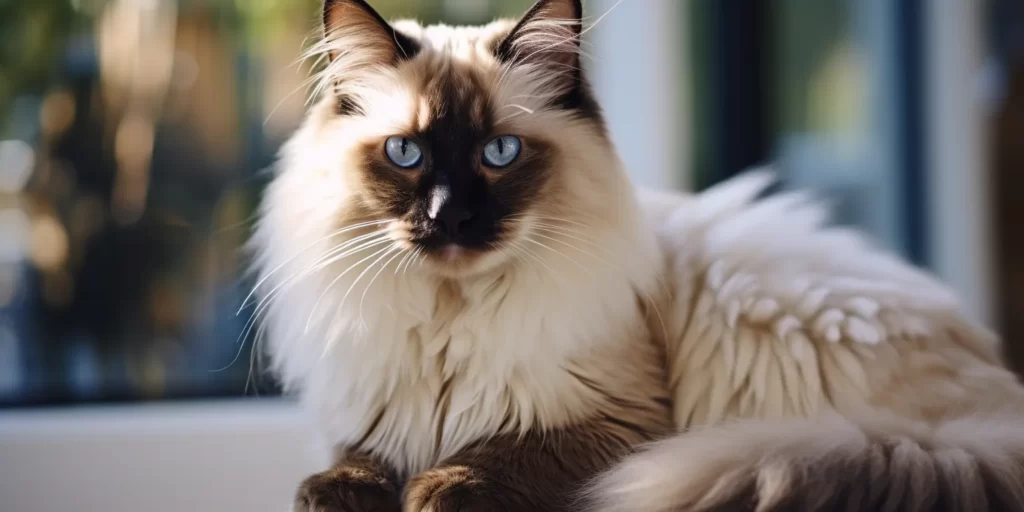
Lastly, the comparison between the Himalayan and the Balinese reveals a contrast in longevity and coat maintenance. Balinese cats, often seen as the long-haired version of the Siamese, share the slender, angular features of their relatives but with a fuller, medium-length coat. The lifespan of the Balinese is impressive, averaging between 18-22 years, which is notably longer than that of the Himalayan.
In terms of grooming, the Balinese falls somewhere between the Himalayan and Siamese. Their coat is not quite as maintenance-heavy as the Himalayan’s, yet it does require regular care to avoid matting. The energy level of the Balinese is high, congruent with their agility and their love for play, which persists well into their senior years.
Though both breeds have high affection levels, with the Himalayan arguably being more suited to quiet evenings and gentle strokes, the Balinese is more likely to engage in interactive play, making it a lively and entertaining companion in a more active household. Trainability for the Balinese is also higher, with this breed more open to learning tricks and commands.
Here’s a quick look at the differences in the table below:
| Characteristics | Himalayan Cat (Male) | Balinese (Male) |
|---|---|---|
| Average height | 10-12 inches | 8-11 inches |
| Average weight | 7-12 lb | 12-15 lb |
| Lifespan | 9-15 years | 18-22 years |
| Exercise | Low-Medium | High |
| Shedding Level | High | Medium |
| Affection Level | High | High |
| Energy Level | Low-Medium | High |
| Trainability | Moderate | High |
Conclusion
In conclusion, the Himalayan cat stands out among various cat breeds not only for its stunning, unique appearance but also for its calm and affectionate temperament. While comparing it with other breeds, the Himalayan’s striking blue eyes, long, luxurious fur, and distinctive color points set it aesthetically apart.
In terms of personality, these cats are generally more laid-back and sociable compared to the more independent or energetic traits seen in breeds like the Siamese or Bengal. However, potential owners should consider that Himalayans require regular grooming and may have breed-specific health concerns.
Ultimately, choosing a cat breed depends on personal preferences, lifestyle, and the ability to meet the needs of the breed you choose. The Himalayan cat is a wonderful choice for those seeking a gentle and beautiful companion, embodying a perfect blend of physical beauty and a sweet disposition.
